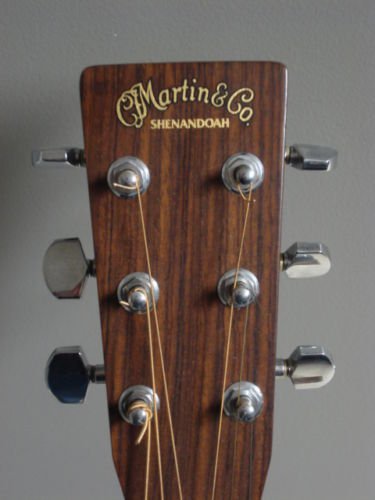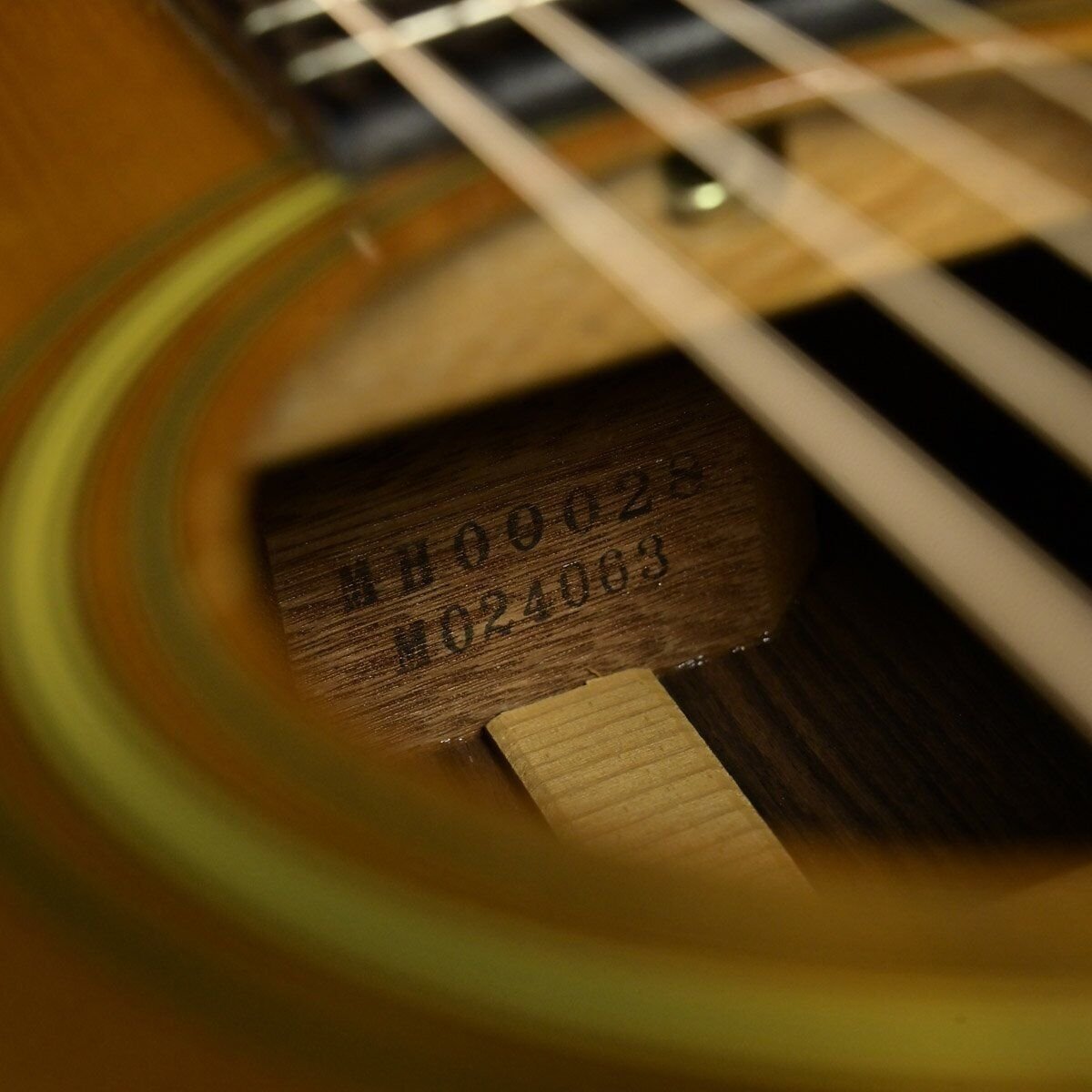Small Batches
All but two models of Shenandoah guitar listed on this page were made in quantities of less than 100 total. The first of these exceptions was the decidedly upscale D-1932, which had its production numbers listed in C.F. Martin & Co records as 158 total. The second is the model D-3, which seems to have been made in somewhat greater numbers, although this is uncertain. All of the others were well under 100 for each model, with the next highest being the SE-2832 at 72 total. As fate would have it, the lowest production number in this category is also an example of Style 19, with the official records showing 12 total for the D12-1932
The instruments are listed on this page in four distinct groups
All of the guitars (plus 52 violins!) in Type 1 were made between 1984 and the second half of 1992, and were assembled in the C.F. Martin factory in Nazareth PA using sub-assemblies made in Japan. They will have a 6 digit serial number on the neck block that is part of the C.F Martin & Co serial numbering system. This can, in turn, be used to determine the year that the guitar was completed
All guitars of this Type will have solid Sitka spruce tops and laminated back/sides
Detailed specs for the Type 1 guitars can be found on the Catalogs and Advertising page
Type 4 consists of guitars that have many distinctive features that set them apart from the previous three groups. The first and most obvious difference is yet another style of logo on the peghead. This time around, it simply reads “Shenandoah” with no mention of C.F. Martin whatsoever. The style of the paper label also changed radically to one resembling a photograph of a mountain landscape. This type of label shows both model and serial number. In addition, the serial number format changed to a two-letter prefix followed by 8 numerals. Like the guitars in Type 2 and 3 there is no known way to precisely date Type 4 guitars by the serial number
All guitars of this Type have a laminated top, with laminated back/sides
Type 1
Type 3
Type 2
Type 3 guitars seem to have been made predominantly for the Japanese home market, although a single example has recently surfaced in the United States. The six known models of this Type all have a Pre-War Style 45 flowerpot inlay on the peghead, with no script or any other markings. The only explicit branding is a “Shenandoah by C.F. Martin” stamp visible through the soundhole, on the back strip. Both Model and Serial numbers start with the letter M. The serial number is followed by six digits
Type 4
Type 2 is made up of guitars that show many signs of being built from parts manufactured by the same Japanese source as Type 1, but unlike their predecessors these parts were also assembled and finished in Japan, sometime after 1992. The most obvious difference between Type 2 guitars and the ones that came before them is the change in the headstock logo to “Shenandoah by C.F. Martin & Co” as opposed to the Type 1 guitars which had the classic “C.F. Martin & Co” logo at the top with a much smaller “Shenandoah” written in block letters underneath. Type 2 guitars will have a paper label visible inside the soundhole that clearly states “Made in Japan” in small but perfectly legible type. This paper label will typically show a model number starting with the letter S and a six-digit serial number. Unfortunately, this serial number uses a completely different system than the first group and there is apparently no way to precisely date Type 2 guitars using this number. That said, the last four Type 1 guitars were completed very early in 1993 and the models appearing in the August 1994 sales brochure were all Type 2, so it’s probably safe to say the Type 2 models were first marketed and sold starting in 1993. After that, it’s anybody’s guess. The resources I have been able to find online all agree that the last of the Type 2 guitars were sold (or at least relased for sale) in 1996. None of them give sources. Make of that what you will….
All guitars of this Type have a solid Sitka spruce top and laminated back/sides
Detailed specs for the Type 2 guitars can be found on the Catalogs & Advertising page








